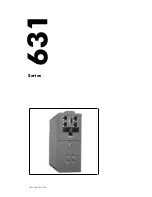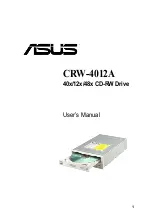
26
VII. RECOMMENDED HIGH VOLTAGE DIELECTRIC
WITHSTAND TESTING (Hi-Pot)
Testing agencies such as UL, CSA, etc., usually require that the equipment under-
go a hi-pot test. In order to prevent catastrophic damage to the drive, which has
been installed in the equipment, it is recommended that the following procedure be
followed. A typical hi-pot test setup is shown in Figure 12, on page 25.
Note:
All equipment AC line inputs must be disconnected from the AC power.
CAUTION!
To avoid damage to the drive, do not connect any terminals of
Terminal Block TM2 to the hi-pot tester.
A. Connect all equipment AC power input lines together and connect them to the
H.V. lead of the hi-pot tester. Connect the RETURN lead of the hi-pot tester to
the frame on which the control and other auxiliary equipment are mounted.
B. The hi-pot tester must have an automatic ramp-up to the test voltage and an
automatic ramp-down to zero voltage.
Note:
If the hi-pot tester does not have automatic ramping, then the hi-pot out-
put must be manually increased to the test voltage and then manually reduced
to zero. This procedure must be followed for each machine to be tested. A sug-
gested hi-pot tester is Slaughter Model 2550.
WARNING!
Instantaneously applying the hi-pot voltage will cause irre-
versible damage to the drive.
VIII. DRIVE OPERATION
Before operating the drive, read the following instructions on keypad use and pro-
gramming functions. See Figure 13, on page 27, for the digital keypad layout.
Note:
To prevent damage, do not operate the keypad with a screwdriver or other
sharp-ended tool.
A. Digital Keypad Description –
The digital keypad has 5 keys and a display
which are used to program drive functions and control various features, as
described below. See Figure 13, on page 27.
1. 3-Digit LED Display –
When power is applied to the drive, the LED, located
at the top left side of the digital display, will illuminate. The digital display will
flash the set frequency (factory setting is “05.0”). When the drive is in Stop
Mode, the set frequency is displayed. When the drive is in the run mode, the
output frequency is displayed.
2. RUN/STOP Key –
The RUN/STOP key is used to run or stop the drive
a. If the drive is in Stop Mode, press the RUN/STOP key to start the drive.
b. If the drive is Run Mode, press the RUN/STOP key to stop the drive.
!
Summary of Contents for KBE2
Page 55: ...55 NOTES...
















































